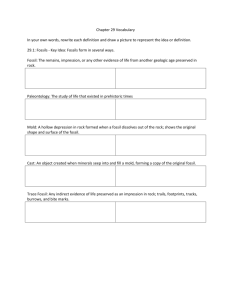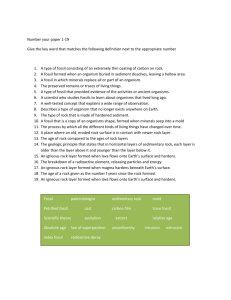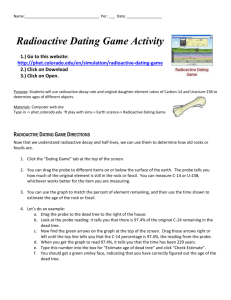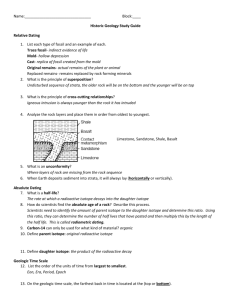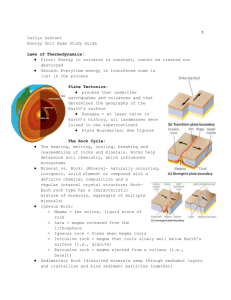Earth Systems Study Guide Common Assessment #1 How did the
advertisement
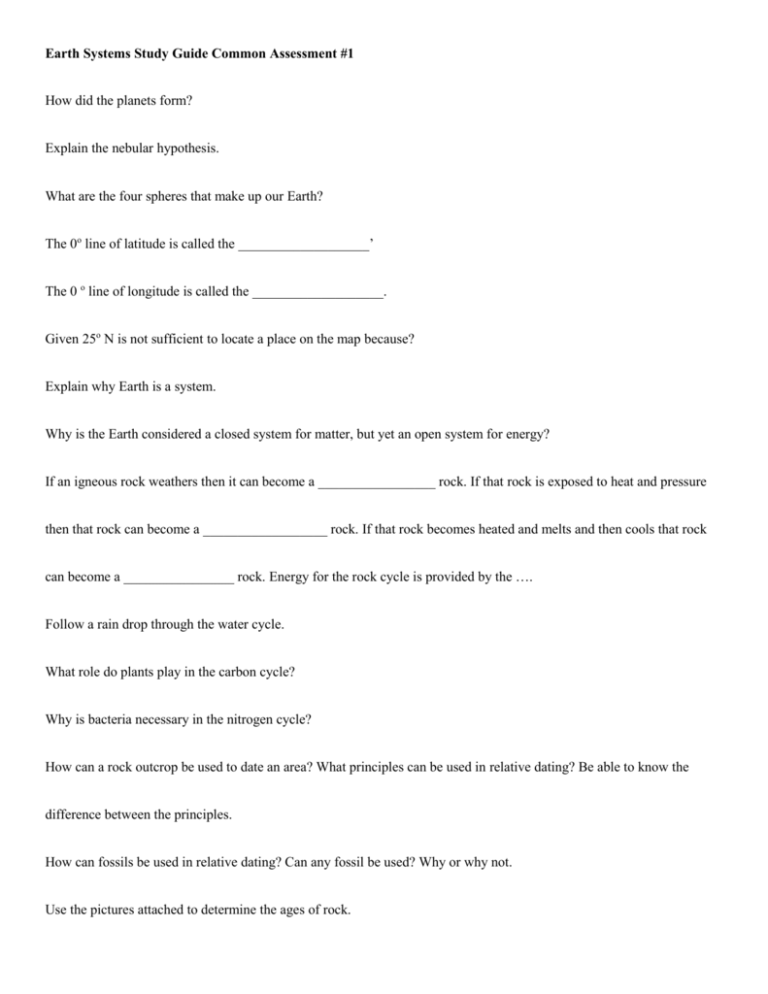
Earth Systems Study Guide Common Assessment #1 How did the planets form? Explain the nebular hypothesis. What are the four spheres that make up our Earth? The 0o line of latitude is called the ___________________’ The 0 o line of longitude is called the ___________________. Given 25o N is not sufficient to locate a place on the map because? Explain why Earth is a system. Why is the Earth considered a closed system for matter, but yet an open system for energy? If an igneous rock weathers then it can become a _________________ rock. If that rock is exposed to heat and pressure then that rock can become a __________________ rock. If that rock becomes heated and melts and then cools that rock can become a ________________ rock. Energy for the rock cycle is provided by the …. Follow a rain drop through the water cycle. What role do plants play in the carbon cycle? Why is bacteria necessary in the nitrogen cycle? How can a rock outcrop be used to date an area? What principles can be used in relative dating? Be able to know the difference between the principles. How can fossils be used in relative dating? Can any fossil be used? Why or why not. Use the pictures attached to determine the ages of rock. How can a piece of wood become a fossil? What are the best conditions for fossil formation? For the above visuals identify what type of fossil they are. What is the principle of fossil succession? What is half- life? How is it used? If 1/8th of the radioactive parent remains and the half-life is 40,000 years, how old could the sample be? If a sample originally had 64 g of radioactive material and it went through 2 half-lives, how many grams of the parent isotope will be left in the sample? We know the half-life of Uranium is 4.6 billion years old. If we know that only half of the original uranium parent isotope exist today on this planet, how old is the Earth?





